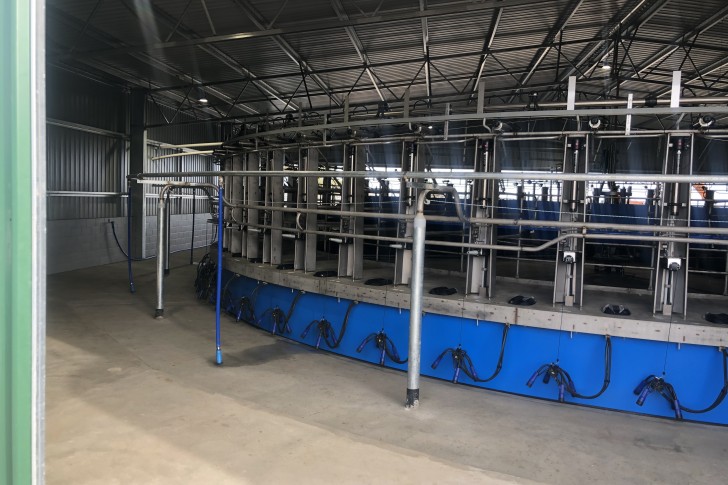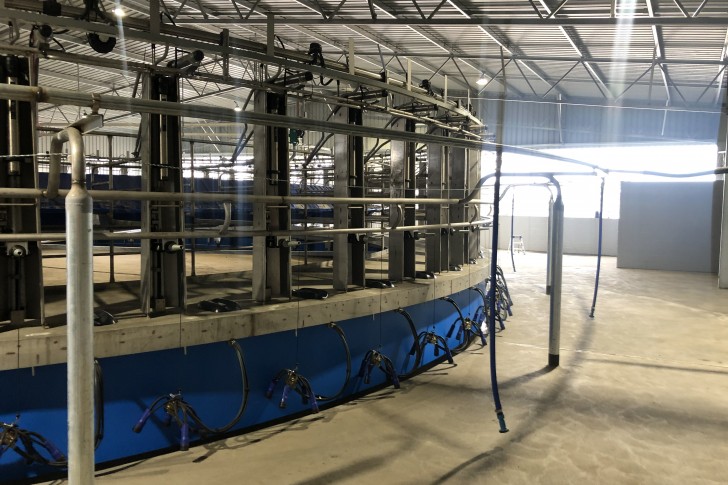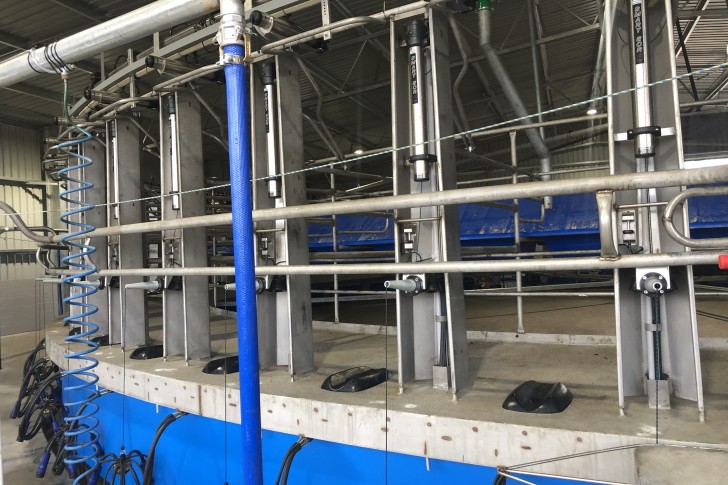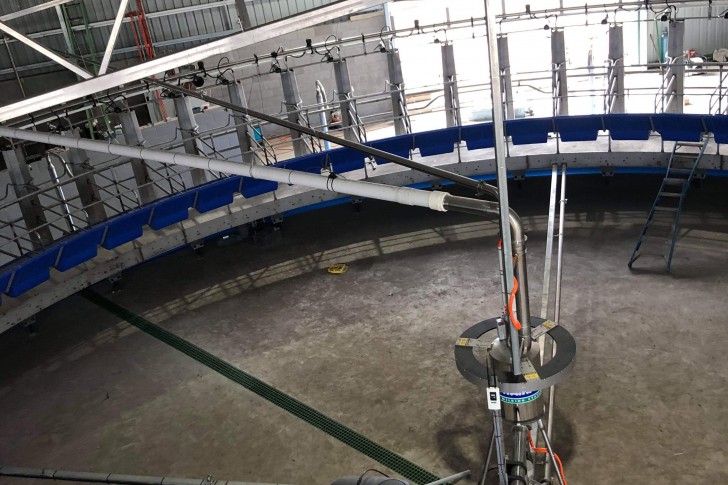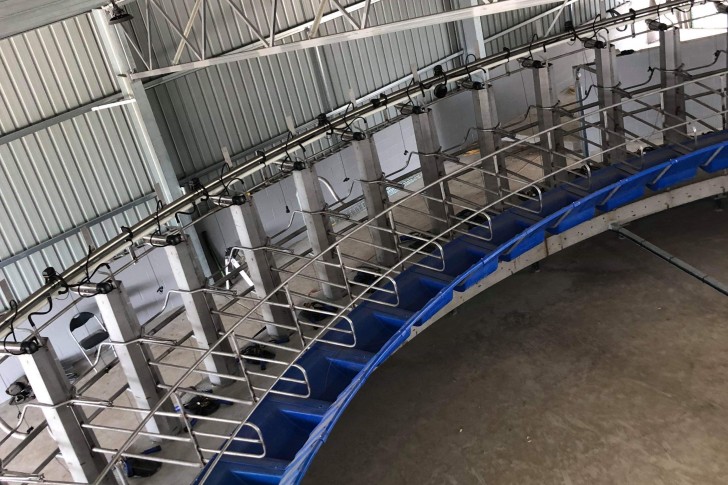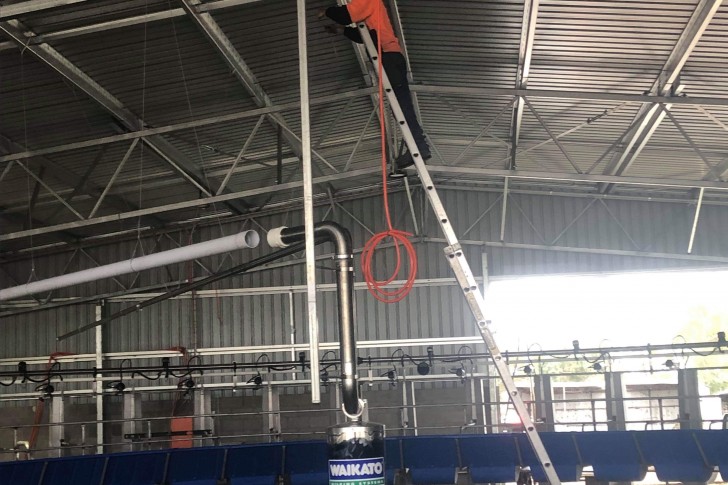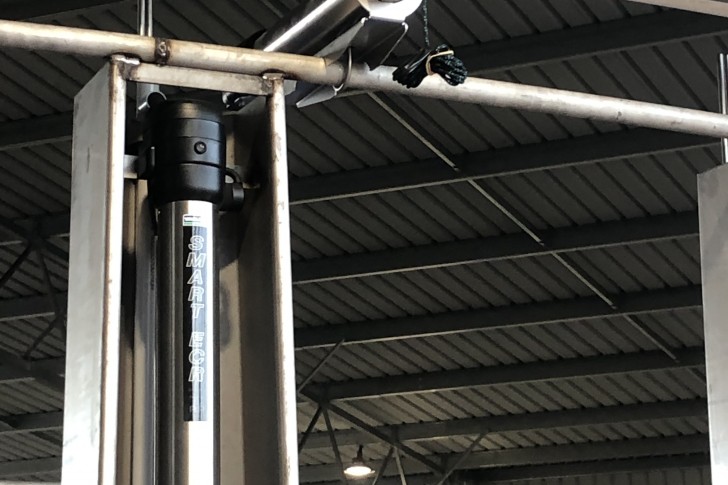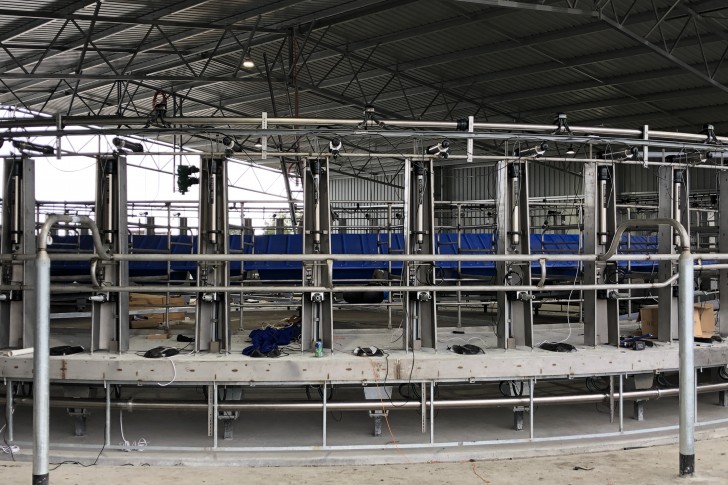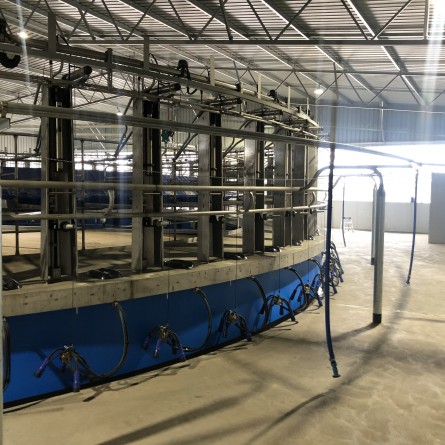
If we can keep milking time simple by introducing new technology, I am all for it.
Willis Johnson reckons any upgrade on a dairy farm has to tick a few crucial boxes in order for the investment to be worthwhile.
“I think it has to make sense from an economic perspective but also to make your work-life balance easier as well. “So when you’re taking on a big project, like we did, it either has to make you money, save you money, or save you time and make life easier. “If it ticks a couple of those boxes, it’s worth doing.” Willis and his family are originally from Taranaki in New Zealand and moved to Australia about 20 years ago where they now run Tatra Farms near Framlingham East in South-West Victoria. About three years ago they decided to embark on a redevelopment of their milking plant operation. “Over the past 10 years we had accrued more land, neighbouring farms, but we were still milking through our 26-aside herringbone. “Due to our growth in herd size, milking was taking way too long, and it was very hard on our staff so we made the move to a new 60-unit rotary.” Willis shopped around to figure out what level of technology and automation he would need to comfortably milk about 500 cows. He also needed someone reliable to supply and install the components on the deck of the rotary. “The main thing for us was that it had to be local, it had to be simple and have that quality service and support for when things go wrong.” Willis got some advice from a friend who had just refitted a milking system using gear manufactured by Waikato Milking Systems, installed by Southwest Dairy Services. “My friend recommended Damian (Loomans) from Southwest Dairy who put together a pretty sharp presentation for us. He was very professional, and pricing was on point. “He also had some good references from other people, so I decided to go with Damian and he hasn’t let us down since.” The old herringbone was removed, and a new rotary constructed in its place during a 10-week project. Willis opted to install some key milking automation components developed by Waikato Milking Systems and used on dairy farms around the world. It included the Smart ECR model of Electronic Cup Removers which can automatically detach from the cows at a preset time or when a sensor shut-off valve detects the animals have finished milking. The Smart ECR eliminates the need to manually remove the cups, freeing up labour to be used elsewhere on the farm. The automatic teat spray system called SmartSPRAY was also installed on the deck in every bail on the roary system. It activates after the cups are removed and before the animal’s head out of the parlour. Automating the teat spray job also cuts back on labour. Willis also wanted automatic cow retention for animals which needed extra attention or inspection, such as specialist veterinary care. The Smart ECR can fulfil this task, controlling the BailMate system which lowers and lifts the bail straps at each point to retain cows or release them at the end of milking. “We’ve kept it simple to make milking easy, we haven’t tried to over complicate the situation.” Willis admits the cows and staff took some training to get used to the rotary after working in a herringbone for many years. But the new plant is now into its third season and delivering good results for the farm. “Milking time is obviously a lot faster than what it was. At the moment we have 500 cows but looking to go up to 600 in 2022. “Milking is twice a day, at 5am and we’re done by 7.15am. In the afternoon milking is at 3pm and we’re fishing at around 5pm. “So getting staff away at 5pm is pretty good for that work-life balance, especially during the summer when the sun is out longer and people want to get away to enjoy that time.” Willis said the option to redevelop their milking system was prompted by an opportunity to buy more land at a neighbouring farm. “We took a bit of a punt because we weren’t 100 per cent sure we would be able to buy the land. But we decided if it didn’t come off, we would be happy milking fewer cows through a modern dairy. “Luckily it came up and we were about to buy the land and, in the process, bump our cow numbers up to 600. We could probably milk more but we would need more staff, so I think the sweet spot for us is about 600-650.” Willis said he’s keen to explore more milking automation technology options to add to the rotary in the coming years. “One of the big issues over here is reliable labour, so if we can keep milking time simple by introducing new technology, I am all for it.”
Specifications:
- Customer: Willis Johnson
- Location: Framlingham East, Victoria, Australia
- Herd Size: 600-650
- Dairy Type: Rotary platform technology upgrade
- Number of bails: 60
- Key Technologies: Smart ECR; SmartSPRAY; SmartWASH; BailMates; Rotek Gland.
- Sales representative: Rob Spencer
- Dealer: Southwest Dairy Services
- Commissioned: 2019



